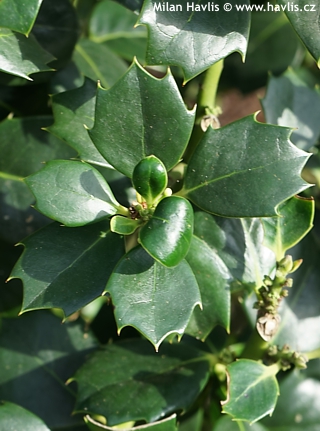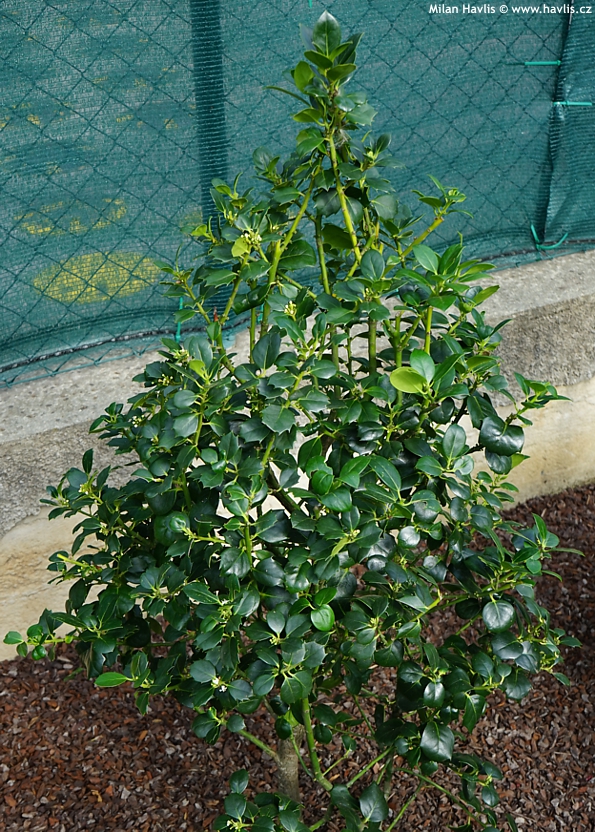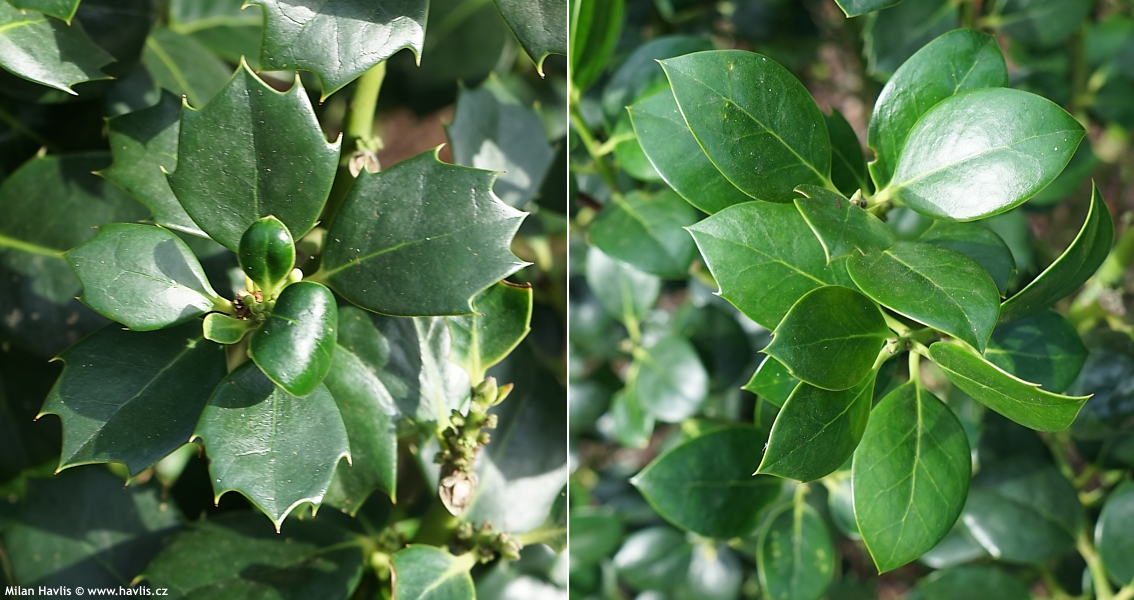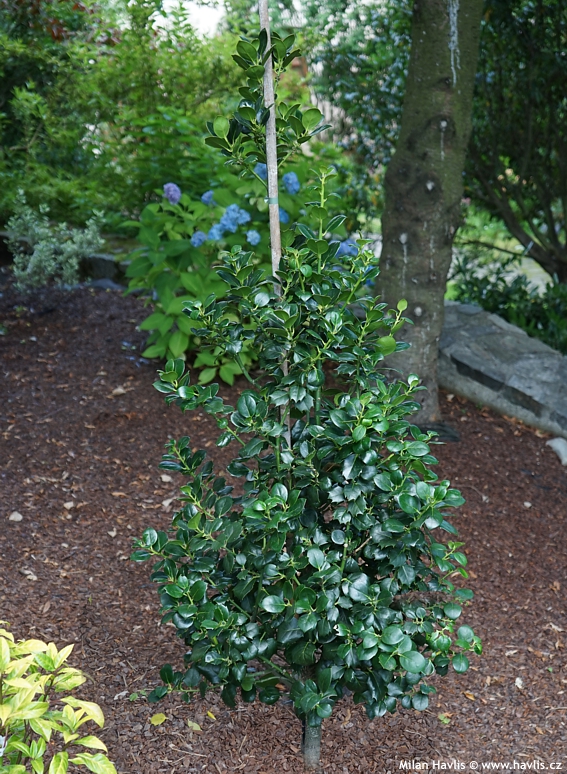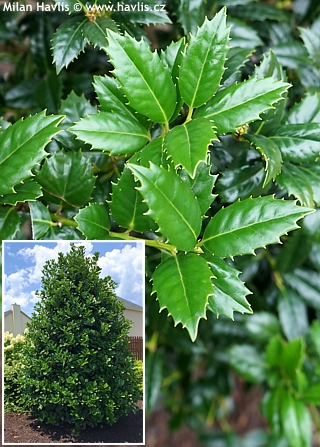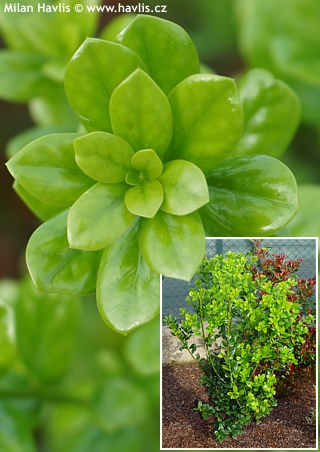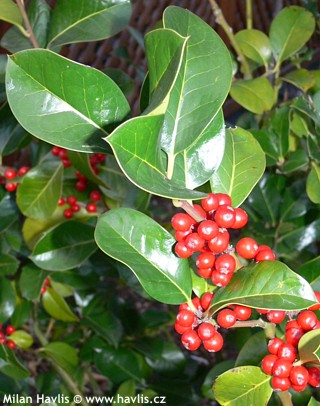Ilex 'MALCOLM S. WHIPPLE' hybrid holly - male
size/type
small tree,taller shrub
usual height
2,5-3,5m
usual width
1,5-2m
leaves
evergreen broadleaf
colour of leaves
location
full to partial sun
soil type
acidic (peaty) to neutral
soil moisture requirements
evenly moist (dislikes drought)
USDA zone (lowest)
7 (down to -23°C)
winter protection
for zone 5+6

for zone 7

categorized
Ilex
Hollies are among the most common evergreen and native plants of milder parts of Europe with high humidity – British Isles, north France, Benelux countries, and milder parts of north Germany. Various species form trees, shrubs, or thickets. They are absent from natural Central European landscape but can be cultivated without problems. They are renowned for glossy, often prickly leaves, and multiple variegated forms have been selected for garden cultivation.Description of the plant:
Malcolm S. Whipple is a hybrid male holly which originated in Colvos Creek Nursery, Washington, USA. It was named after Malcolm Whipple (1925-2019), a farmer and horticulturist, who loved plants and gardens, and when he retired, he changed his hobby from digging in the ground to writing poems about the beauty of gardens and nature. This holly is a cross between i. aquifolium and i. cornuta. Especially the influence of the latter is clearly visible in the leaf structure – the spines are always present in pairs and are almost parallel with the tip. Leaves are evergreen, leathery, broadly ovate to almost rounded, very dark green, and glossy. They usually have 2-3 pairs of spines plus a sharp tip, but some leaves are completely entire (spineless).
It grows slowly to moderately, some 15-20 cm per year, into a broadly pyramidal, dense shrub or small tree with strong, light green twigs. As a male variety its pollen pollinates most female hollies but it does not produce any berries itself. Thanks to unique leaf shape and limited availability it belongs among collectors’ pieces. But obviously also in a non-collector’s garden it will serve a great, deep green specimen plant, or it can be used in an evergreen setting surrounded by shrubs of contrasting foliage.
Grow hollies in moist but well-drained, fertile soil. They can take periods of drought once established but dislike compacted, heavy-clay-based soils that turn very dry in summer, and often too wet in winter. If your soil is such, dig the planting hole only half the depth of the root ball, refine what you dig out and mix well with quality substrate of highly acidic level (low pH value). Using this mixture make a gradual slope from the stem to the original ground level and tamp it down as much as you can. Your root ball should not look like a molehill but more like a wide and flat mound. Mulch it well and keep watering it more often as it will be more prone to drying out as opposed to most common flat-in-the-ground transplanting. Hollies do best in full sun but can also grow in shade where they will lose their compact habit. Before and during winter when the soil is not frozen provide good watering. Hardy to min. -24 °C (USDA zone 6) and trials for better hardiness are ongoing.
Last update 28-12-2020
QUICK PRICE OVERVIEW
CURRENTLY SOLD OUT












